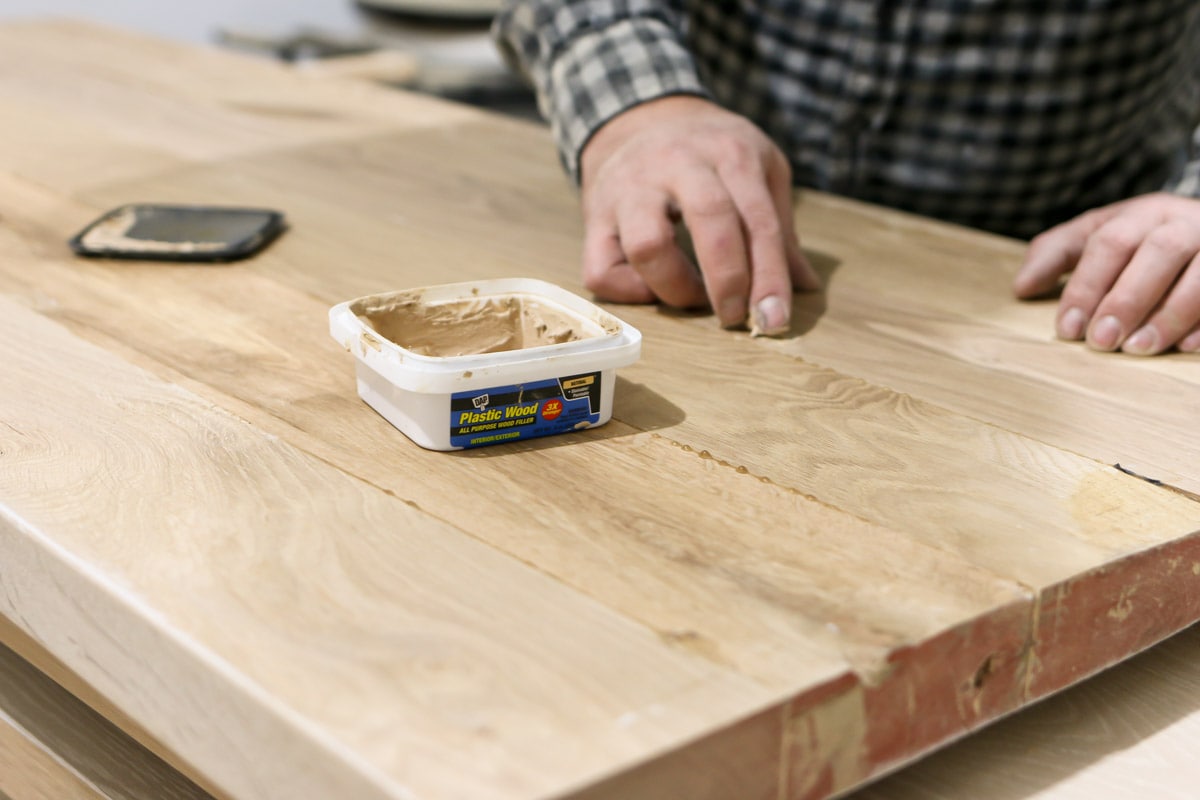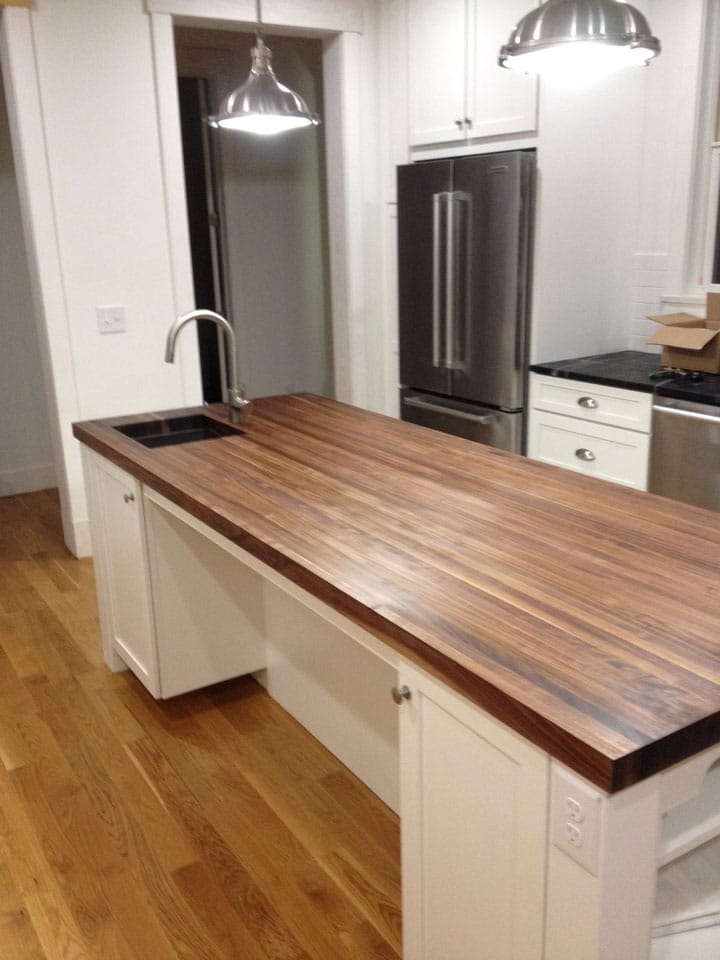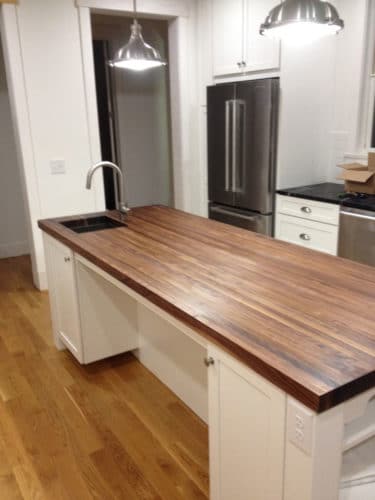Homemade butcher block countertops are a popular choice for homeowners looking to add warmth, character, and functionality to their kitchens. These countertops are made from solid wood pieces that are glued together to create a sturdy and durable surface that can withstand the demands of everyday use. Here’s a comprehensive guide to creating homemade butcher block countertops:
Selecting the Wood: The first step in making homemade butcher block countertops is selecting the wood for the project. Hardwoods like maple, oak, cherry, and walnut are commonly used for butcher block countertops due to their durability and resistance to wear and tear. Choose wood with straight grain patterns and minimal knots for a smoother and more uniform appearance.
Preparing the Wood: Once you’ve selected the wood, it’s essential to prepare it for use in the countertop. Start by cutting the wood into uniform strips of equal width and thickness using a table saw or a miter saw. Then, arrange the strips in the desired pattern, alternating the grain direction to minimize warping and maximize strength.
Gluing the Strips: After arranging the wood strips in the desired pattern, apply a generous amount of wood glue to the edges of each strip and press them together firmly to form a solid block. Use clamps to hold the strips together while the glue dries, ensuring a tight and secure bond between the strips.
Trimming and Sanding: Once the glue has dried, remove the clamps and trim the edges of the butcher block to create a clean and uniform surface. Use a belt sander or orbital sander to sand the surface of the butcher block, starting with a coarse grit sandpaper and gradually moving to finer grits to achieve a smooth and even finish.

Sealing the Butcher Block: After sanding, it’s essential to seal the butcher block to protect it from moisture, stains, and bacteria. Apply a food-safe sealant or butcher block oil to the surface of the countertop, following the manufacturer’s instructions for application. Be sure to apply multiple coats of sealant, allowing each coat to dry completely before applying the next.
Installing the Countertop: Once the butcher block is sealed and dried, it’s ready to be installed in the kitchen. Place the countertop on top of the cabinets or substrate, ensuring it is level and securely attached. Use screws or adhesive to secure the countertop in place, making sure to leave space for expansion and contraction of the wood.
Finishing Touches: After installing the butcher block countertop, add finishing touches such as applying a final coat of sealant, installing trim pieces along the edges, and sealing any gaps or seams with caulk. Be sure to follow proper maintenance and care guidelines to keep your homemade butcher block countertop looking its best for years to come.

Regular Maintenance: To maintain the beauty and longevity of your homemade butcher block countertop, it’s essential to follow a regular maintenance routine. Clean the countertop regularly with a mild detergent and water, and avoid using harsh chemicals or abrasive cleaners that can damage the wood. Apply a fresh coat of sealant or butcher block oil every few months to keep the wood protected and looking its best.
Avoiding Moisture and Heat: Wood is susceptible to damage from moisture and heat, so it’s essential to take precautions to protect your butcher block countertop. Wipe up spills promptly to prevent water damage, and use trivets or hot pads to protect the wood from heat damage caused by hot pots, pans, and dishes.
Preventing Scratches and Dents: While wood is durable, it can still be prone to scratches and dents from sharp objects and heavy items. Use cutting boards and trivets to protect the surface of the butcher block from scratches and dents, and avoid cutting directly on the countertop with sharp knives or utensils.
Regular Cleaning: Keeping your homemade butcher block countertop clean is essential for maintaining its appearance and longevity. Use a mild detergent and water to clean the countertop regularly, and avoid using abrasive cleaners or scouring pads that can scratch the surface. Dry the countertop thoroughly after cleaning to prevent water damage.
Avoiding Harsh Chemicals: Harsh chemicals can damage the sealant and finish of your butcher block countertop, so it’s essential to avoid using them. Instead, opt for mild detergents and natural cleaning solutions that are safe for use on wood surfaces. Be sure to read the labels of any cleaning products you use to ensure they are suitable for butcher block countertops.

Preventing Stains: Stains can detract from the beauty of your homemade butcher block countertop, so it’s essential to take precautions to prevent them. Wipe up spills promptly to prevent staining, and avoid leaving acidic or highly pigmented substances, such as wine, coffee, or tomato sauce, on the countertop for extended periods.
Avoiding Direct Sunlight: Direct sunlight can cause the wood to fade and discolor over time, so it’s essential to avoid placing your butcher block countertop in areas where it will be exposed to direct sunlight for extended periods. If your countertop is near a window or skylight, consider using curtains or blinds to protect it from UV rays.
Regular Maintenance Checks: Periodically inspect your homemade butcher block countertop for signs of wear and tear, such as scratches, dents, or water damage. Address any issues promptly to prevent them from worsening and protect the integrity of the countertop.

Can I use any type of wood to make a homemade butcher block countertop?
While you can technically use any type of wood to make a homemade butcher block countertop, hardwoods like maple, oak, cherry, and walnut are generally preferred due to their durability and resistance to wear and tear. It’s essential to choose wood with straight grain patterns and minimal knots for a smoother and more uniform appearance.
How thick should a homemade butcher block countertop be?
The thickness of a homemade butcher block countertop can vary depending on personal preference and the intended use of the countertop. However, most butcher block countertops are between 1.5 to 2 inches thick to provide a sturdy and durable surface that can withstand the demands of everyday use.
Do I need to seal a homemade butcher block countertop?
Yes, it’s essential to seal a homemade butcher block countertop to protect it from moisture, stains, and bacteria. Apply a food-safe sealant or butcher block oil to the surface of the countertop, following the manufacturer’s instructions for application. Be sure to apply multiple coats of sealant, allowing each coat to dry completely before applying the next.
How do I maintain a homemade butcher block countertop?
To maintain a homemade butcher block countertop, follow a regular maintenance routine that includes cleaning the countertop regularly with a mild detergent and water, avoiding harsh chemicals and abrasive cleaners, and applying a fresh coat of sealant or butcher block oil every few months to keep the wood protected and looking its best.
Can I install a homemade butcher block countertop myself, or do I need to hire a professional?
Whether you can install a homemade butcher block countertop yourself or need to hire a professional depends on your level of DIY experience, the complexity of the installation, and your comfort level with handling tools and materials. If you have basic DIY skills and feel confident in your abilities, you may be able to install a homemade butcher block countertop yourself. However, if you’re unsure or if the installation is complex, it’s best to hire a professional installer to ensure the job is done correctly and safely.
How to Build Butcher Block Countertops Reality Daydream

Painted Furniture Ideas 9 Steps to DIY Butcher Block Countertop

How to Build Butcher Block Countertops Reality Daydream

Do-It-Yourself Butcher-Block Kitchen Countertop HGTV

How to: Build Your Own Butcher Block – Addicted 2 DIY

How to: Build Your Own Butcher Block – Addicted 2 DIY

Related articles:
- Pine Butcher Block Countertops
- Butcher Block Countertops Walnut
- Maple Butcher Block Countertops
- Care Of Butcher Block Countertop
- Butcher Block Countertops Maintenance
- Antique Butcher Block Countertops
- Butcher Block Countertop Sealing
- Wood Butcher Block Countertop
- Thick Butcher Block Countertop
- How To Finish A Butcher Block Countertop